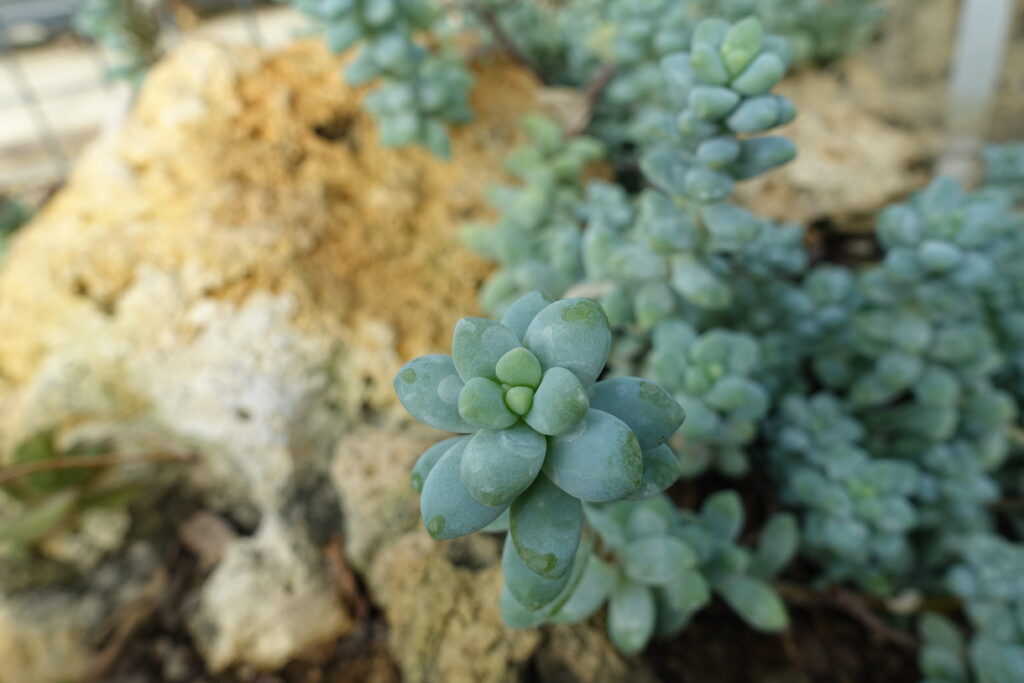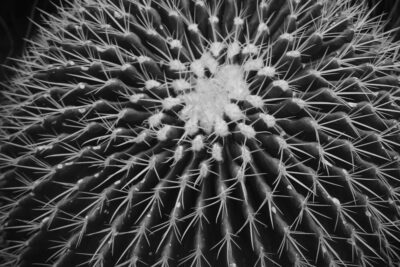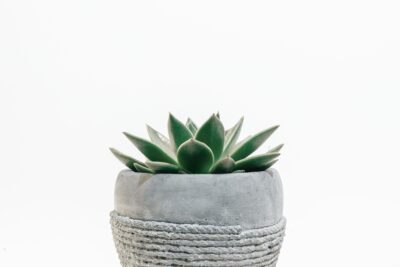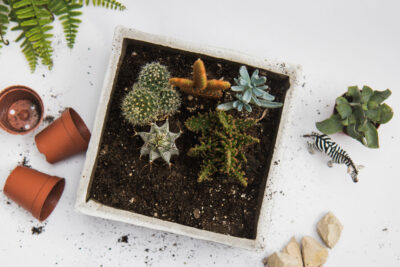
Maximum Size of Succulent Plants in Optimal Growing Conditions

Succulent plants are known for their ability to store water in their leaves, stems, and roots, making them well-adapted to survive in arid climates. These plants have gained popularity among gardening enthusiasts due to their unique and attractive shapes, colors, and textures. However, many people wonder just how large these plants can grow under optimal growing conditions.
We will explore the maximum size that succulent plants can reach when provided with the ideal environment for growth. We will discuss the factors that influence plant size, such as species, genetics, and environmental conditions. Additionally, we will provide examples of some of the largest succulent species and highlight their unique characteristics. Whether you are a seasoned succulent collector or just starting your journey with these fascinating plants, this article will provide valuable insights into the growth potential of succulents.
- Provide ample sunlight for the succulent plants
- Use well-draining soil to prevent root rot
- Water the plants sparingly to avoid overwatering
- Fertilize the plants regularly to promote healthy growth
- Prune the plants to maintain their shape and size
- Choose the appropriate pot size to accommodate the plant's growth
- Ensure proper air circulation around the plants
- Protect the plants from extreme temperatures and frost
- Monitor for pests and diseases and take appropriate action
- Provide sufficient space for the plants to spread and grow
- Frequently Asked Questions
- 1. What is the maximum size that succulent plants can reach in optimal growing conditions?
- 2. How long does it take for succulent plants to reach their maximum size?
- 3. Can succulent plants continue to grow larger after reaching their maximum size?
- 4. What factors contribute to the growth and size of succulent plants?
Provide ample sunlight for the succulent plants
Succulent plants thrive in bright, direct sunlight. It is essential to provide them with ample sunlight to ensure their optimal growth and development. Place your succulents in a location where they can receive at least six hours of sunlight per day.
When positioning your succulent plants, consider placing them near a south-facing window or in a spot where they can receive the most sunlight. If you notice that your succulents are stretching or leaning towards the light source, it is an indication that they are not receiving enough sunlight. In such cases, consider supplementing their light requirements with artificial grow lights.
Remember that while succulents love sunlight, they can also get sunburned if exposed to intense, direct sunlight for prolonged periods. To prevent sunburn, gradually introduce your succulents to direct sunlight, especially if they have been grown in lower light conditions. A sudden transition to intense sunlight can cause their leaves to turn brown or develop sunburn spots.
Additionally, keep in mind that some succulent species can tolerate more shade than others. Research the specific needs of your succulent variety to ensure you are providing the appropriate amount of sunlight for their optimal growth.
 Choosing Low-Maintenance Outdoor Perennial Succulents
Choosing Low-Maintenance Outdoor Perennial SucculentsOverall, providing ample sunlight is crucial for the maximum size and overall health of your succulent plants.
Use well-draining soil to prevent root rot
One of the key factors in maintaining the maximum size of succulent plants is to provide them with optimal growing conditions. One crucial aspect to consider is the type of soil you use. Succulents require well-draining soil to prevent root rot and promote healthy growth.
When it comes to succulents, a sandy or gritty soil mix is ideal. This type of soil allows excess water to drain quickly, preventing the roots from sitting in damp conditions, which can lead to root rot. Root rot occurs when the roots are constantly exposed to excessive moisture, causing them to rot and eventually killing the plant.
To create a well-draining soil mix, you can combine regular potting soil with coarse sand or perlite. The addition of sand or perlite helps to create air pockets within the soil, allowing water to flow through and preventing it from becoming waterlogged.
It's important to note that succulents are adapted to arid conditions, where water is scarce. Their ability to store water in their leaves, stems, and roots helps them survive in dry environments. However, this also means they are prone to overwatering, so it's crucial to provide them with the right soil to avoid waterlogged conditions.
When repotting your succulents, make sure to choose a pot with drainage holes. These holes allow excess water to escape, further preventing water from pooling at the bottom of the pot. Without proper drainage, the soil becomes compacted and retains moisture, increasing the risk of root rot.
 Is Lack of Sunlight Killing My Succulent?
Is Lack of Sunlight Killing My Succulent?In addition to using well-draining soil, it's essential to water your succulents correctly. Succulents generally prefer infrequent watering but with thorough soaking. This watering technique mimics their natural habitat, where they experience periods of drought followed by heavy rainfall. Watering thoroughly ensures that the water reaches the deeper roots, promoting healthy growth.
To summarize, using well-draining soil is crucial in preventing root rot and maintaining the maximum size of your succulent plants. By providing the right growing conditions, including the appropriate soil and watering techniques, you can help your succulents thrive and reach their full potential.
Water the plants sparingly to avoid overwatering
One of the most common mistakes when it comes to caring for succulent plants is overwatering. These plants are adapted to thrive in arid conditions, so they have developed the ability to store water in their leaves, stems, and roots. Therefore, they do not require frequent watering like other houseplants.
Overwatering can lead to root rot, which is a common cause of death for succulents. To avoid this, it is crucial to water your succulents sparingly. The frequency of watering will depend on various factors such as the type of succulent, the size of the pot, and the environmental conditions.
As a general rule of thumb, wait until the soil is completely dry before watering your succulents again. You can easily check the moisture level of the soil by inserting your finger about an inch deep into the soil. If it feels dry, it's time to water.
When watering, make sure to thoroughly soak the soil until water drains out of the bottom of the pot. This ensures that the water reaches the roots and helps prevent the accumulation of excess moisture. Avoid misting or lightly spraying the leaves, as this can encourage fungal diseases.
Remember, it is better to underwater than to overwater your succulents. These plants are adapted to survive drought, and they can tolerate being slightly dehydrated. By watering them sparingly, you will promote healthy growth and prevent the risk of root rot.
 Optimal Outdoor Climate for Succulents: Temperature Range Tips
Optimal Outdoor Climate for Succulents: Temperature Range TipsFertilize the plants regularly to promote healthy growth
Fertilizing succulent plants is essential for promoting healthy growth and maximizing their size in optimal growing conditions. By providing the right nutrients, you can ensure that your succulents thrive and reach their full potential.
When it comes to fertilizing succulents, it's important to choose a fertilizer that is specifically formulated for these types of plants. Look for a balanced fertilizer with an NPK ratio of around 10-10-10 or a similar ratio. This will provide a good mix of nitrogen, phosphorus, and potassium, which are essential for plant growth.
It's best to fertilize succulents during their active growing season, which is typically in the spring and summer months. During this time, the plants are actively taking in nutrients and using them to fuel their growth. Avoid fertilizing during the dormant period, as the plants won't be actively using the nutrients and it may lead to nutrient buildup in the soil.
When applying fertilizer to your succulents, it's important to follow the instructions on the packaging. Dilute the fertilizer to half or quarter strength to avoid over-fertilizing, which can burn the roots and harm the plants. Applying the fertilizer too frequently can also lead to excess salts in the soil, which can be detrimental to succulents.
One effective method of fertilizing succulents is the "soak and dry" technique. This involves thoroughly watering the plants, allowing the excess water to drain out, and then applying the diluted fertilizer to the damp soil. This ensures that the nutrients are evenly distributed and readily available to the plants.
Remember to always water your succulents before applying fertilizer. Applying fertilizer to dry soil can increase the risk of root burn. Additionally, it's important to keep in mind that succulents have a lower nutrient requirement compared to other types of plants. Therefore, it's best to under-fertilize rather than over-fertilize to prevent any potential damage.
Fertilizing your succulent plants regularly is crucial for promoting healthy growth and maximizing their size. By choosing the right fertilizer, applying it during the active growing season, and following the proper dilution and application techniques, you can ensure that your succulents thrive and reach their full potential.
 The Ideal Amount of Sunlight for Succulent Growth: A Guide
The Ideal Amount of Sunlight for Succulent Growth: A GuidePrune the plants to maintain their shape and size
When growing succulent plants, it is important to understand that they have the potential to grow quite large if left unattended. To maintain their desired shape and size, it is necessary to prune them regularly.
Pruning is the process of removing unwanted or overgrown parts of the plant. It not only helps in controlling the size but also promotes healthier growth and enhances the overall appearance of the succulent.
Here are a few tips for pruning succulent plants:
- Start by assessing the overall size and shape of the plant. Determine which areas need to be pruned to maintain the desired form.
- Use a pair of clean and sharp pruning shears or scissors to avoid damaging the plant.
- Identify any dead, damaged, or diseased parts of the plant and remove them carefully.
- Trim back any excessively long or leggy stems to promote a more compact growth habit.
- If the succulent has grown too large for its pot, consider repotting it into a larger container to accommodate its size.
It is important to note that not all succulent plants require extensive pruning. Some varieties naturally stay small and compact, while others have a tendency to grow larger. Research the specific needs of your succulent plant to determine the best pruning approach.
Regular pruning, combined with proper care and optimal growing conditions, will help you maintain the maximum size of your succulent plants, ensuring they remain healthy, vibrant, and visually appealing.
Choose the appropriate pot size to accommodate the plant's growth
When it comes to growing succulent plants, choosing the right pot size is crucial to ensure their maximum growth potential. Succulents, known for their ability to store water in their leaves and stems, thrive in optimal growing conditions. To provide them with the best environment, it's important to consider the size of the pot they are planted in.
 Sunlight Needs of Succulent Plants: Finding the Perfect Balance
Sunlight Needs of Succulent Plants: Finding the Perfect BalanceWhen selecting a pot for your succulent, it's essential to choose one that allows for sufficient space for the plant to grow. If the pot is too small, the succulent's roots may become cramped and hinder its growth. On the other hand, an excessively large pot can retain too much moisture, leading to root rot.
Here are some guidelines to help you determine the appropriate pot size for your succulent:
Consider the size of the succulent
- Small succulents: For small succulents, such as Echeveria or Sedum, a pot with a diameter of 2-4 inches (5-10 cm) is suitable.
- Medium-sized succulents: Succulents like Aloe vera or Haworthia typically require a pot with a diameter of 4-6 inches (10-15 cm).
- Large succulents: Agave or Euphorbia species generally need a pot with a diameter of 6-8 inches (15-20 cm) or more.
Keep in mind that these are general guidelines, and the exact size may vary depending on the specific species and growth habits of your succulent. Additionally, consider the height of the pot, ensuring it provides enough depth for the succulent's root system.
Allow room for growth
While selecting a pot size, it's important to anticipate the future growth of your succulent. Succulents have the ability to grow and expand, especially during their active growing season. Therefore, it's advisable to choose a pot that will accommodate the plant's growth for at least a year or two.
Providing sufficient space allows the succulent to develop a healthy root system and establish stability. It also reduces the need for frequent repotting, which can cause stress to the plant.
Consider the pot's drainage capabilities
In addition to size, pay attention to the pot's drainage capabilities. Adequate drainage is crucial for succulents as they are prone to root rot when excess water accumulates in the soil. Look for pots with drainage holes at the bottom to allow excess water to escape, preventing waterlogged conditions.
Moreover, consider using a well-draining soil mix specifically formulated for succulents. This will further enhance the drainage capacity of the pot and promote healthy growth.
 Can Peat Moss Be Beneficial as a Soil Amendment for Succulents?
Can Peat Moss Be Beneficial as a Soil Amendment for Succulents?By choosing the appropriate pot size for your succulent, you provide it with the ideal conditions for growth and ensure its well-being. Remember to consider the size of the succulent, allow room for growth, and prioritize proper drainage to create an optimal environment for your beloved succulent plants.
Ensure proper air circulation around the plants
Proper air circulation is essential for the healthy growth of succulent plants. When plants are crowded together or placed in an area with limited air movement, it can lead to a buildup of moisture and increase the risk of fungal diseases. To ensure optimal air circulation, follow these guidelines:
- Space out your succulent plants adequately, allowing enough room for air to flow freely between them. This will help prevent the spread of diseases and promote overall plant health.
- Avoid placing succulents in areas with stagnant air, such as corners or closed-off spaces. Instead, choose locations with good natural airflow or consider using fans to improve circulation.
- Regularly prune and remove any dead or decaying parts of the plants. This will not only improve air circulation but also prevent the spread of diseases or pests.
- Consider using a well-draining soil mix and pots with adequate drainage holes. This will help prevent excessive moisture buildup and promote healthy root growth.
By ensuring proper air circulation around your succulent plants, you can create an optimal growing environment that supports their maximum size and overall well-being.
Protect the plants from extreme temperatures and frost
One of the essential factors to consider when growing succulent plants is protecting them from extreme temperatures and frost. Succulents are known for their ability to survive in arid climates, but they still require some level of temperature control to thrive.
Extreme heat can cause succulents to become dehydrated and wilt, while freezing temperatures can lead to frost damage and even death. It is crucial to monitor the weather conditions and take necessary precautions to safeguard your succulents.
 Can Succulents Thrive Outdoors in Any Climate and Season?
Can Succulents Thrive Outdoors in Any Climate and Season?1. Providing shade
Succulent plants are adapted to thrive in bright sunlight, but prolonged exposure to intense heat can be detrimental. To protect your succulents from scorching temperatures, it is recommended to provide them with shade during the peak hours of the day.
You can use shade cloths, netting, or place your succulents in areas with partial shade. This will help to shield them from excessive sunlight and prevent sunburn. It is important to strike a balance by allowing enough sunlight for the plants to photosynthesize while avoiding excessive heat stress.
2. Implementing proper insulation
When temperatures drop below freezing, succulents are at risk of frost damage. Insulating your plants can help protect them from extreme cold and prevent frostbite.
You can use materials like frost cloth, burlap, or even old blankets to wrap around your succulents during colder periods. This insulation will create a barrier between the plants and the freezing temperatures, helping to maintain a more stable environment.
3. Utilizing protective coverings
Another effective method to shield your succulents from extreme temperatures is by utilizing protective coverings. This involves using items such as plastic domes or mini greenhouses to create a controlled microclimate around your plants.
These coverings trap heat and create a warmer environment, which can be particularly beneficial during colder seasons. However, it is important to monitor the temperature inside these coverings to prevent overheating and ensure proper ventilation.
4. Sheltering during severe weather conditions
In case of severe weather conditions, such as storms or hail, it is advisable to provide temporary shelter for your succulents. This can be achieved by moving them indoors or placing them in a protected area like a greenhouse or covered patio.
 Unraveling the Secrets of Succulents: Thriving in Diverse Environments
Unraveling the Secrets of Succulents: Thriving in Diverse EnvironmentsBy taking these precautions and providing the necessary protection, you can help your succulent plants thrive in optimal growing conditions and prevent any damage caused by extreme temperatures or frost.
Monitor for pests and diseases and take appropriate action
One of the essential aspects of maintaining the health and vitality of your succulent plants is to regularly monitor them for any signs of pests or diseases. These tiny invaders can wreak havoc on your plants if left unchecked, causing damage and potentially even death.
Here are some key steps to help you effectively monitor and manage pests and diseases:
- Visual Inspection: Take the time to closely examine your succulent plants on a regular basis. Look for any signs of pests such as aphids, mealybugs, scale insects, or spider mites. Additionally, keep an eye out for symptoms of diseases like root rot, powdery mildew, or fungal infections.
- Early Detection: It is crucial to catch any pest or disease issues early on to prevent them from spreading and causing further damage. Regularly inspect the leaves, stems, and roots of your plants for any abnormalities or signs of infestation.
- Isolation: If you identify any plants with pests or diseases, it is essential to isolate them from the rest of your collection. This will help prevent the spread of the problem to other healthy plants.
- Natural Remedies: Whenever possible, opt for natural pest control methods to minimize the use of harsh chemicals. For example, introducing beneficial insects like ladybugs or using neem oil can help control common pests. For diseases, remove and dispose of affected plant parts promptly.
- Research and Consultation: If you are unsure about the specific pest or disease affecting your succulent plants, conduct research or seek advice from local gardening experts or online forums. Identifying the problem accurately is crucial for implementing the most effective solutions.
- Maintain Optimal Growing Conditions: Keeping your succulents healthy and strong is the best defense against pests and diseases. Ensure they receive adequate sunlight, well-draining soil, and appropriate watering practices. Healthy plants are more resilient and better equipped to fight off potential threats.
Remember, prevention and early intervention are key when it comes to managing pests and diseases in your succulent plants. By regularly monitoring your plants and taking swift action, you can help ensure their maximum size and overall well-being in optimal growing conditions.
Provide sufficient space for the plants to spread and grow
When it comes to succulent plants, providing sufficient space for them to spread and grow is essential for their optimal development. These plants have the potential to reach impressive sizes under the right conditions, so it's important to consider their maximum size when planning your garden or indoor arrangement.
 The Ultimate Guide: Maximum Size of Indoor and Outdoor Succulents
The Ultimate Guide: Maximum Size of Indoor and Outdoor SucculentsHere are some important factors to consider regarding the maximum size of succulent plants:
1. Understanding the growth habit
Each succulent species has its own unique growth habit, which can significantly influence its ultimate size. Some succulents, like the Aloe vera, have a rosette growth habit, meaning they grow in a circular pattern with leaves radiating from a central point. Others, such as the Euphorbia trigona, have a more elongated growth habit, resembling a cactus with multiple branches.
Understanding the growth habit of your succulent is crucial in determining the space it will ultimately require. Research the specific succulent species you are interested in and take note of their typical growth patterns and sizes.
2. Considering the container or planting area
The container or planting area you choose can also impact the maximum size your succulent can achieve. If you're growing succulents in pots, make sure to select containers that are appropriately sized for the mature dimensions of the plant. Giving the roots enough space to spread and grow will contribute to healthier overall growth.
If you're planting succulents in the ground, consider the available space in your garden. Some succulents can spread and create large clusters, so ensure there is enough room for them to expand without crowding other nearby plants.
3. Providing optimal growing conditions
Succulents thrive in environments with lots of sunlight, well-draining soil, and appropriate watering practices. When succulents are provided with optimal growing conditions, they have the potential to reach their maximum size.
Ensure your succulents receive at least six hours of sunlight per day, either by placing them in a sunny spot indoors or in a location with direct sunlight outdoors. Using a well-draining soil mix specifically formulated for succulents will prevent waterlogged roots and promote healthy growth.
 Are my succulents stretching under my grow light? How to prevent it
Are my succulents stretching under my grow light? How to prevent itRemember to water your succulents sparingly and allow the soil to dry out between waterings. Overwatering can lead to root rot and hinder the plant's growth potential.
4. Pruning and maintenance
Regular pruning and maintenance can also play a role in controlling the size of your succulent plants. Removing dead or damaged leaves and trimming excessive growth can help maintain the desired size and shape of your succulents.
However, it's important to note that pruning should be done carefully, following specific guidelines for each succulent species. Some succulents may have unique growth patterns or may not tolerate heavy pruning, so always research and understand the specific needs of your succulents before pruning.
By considering these factors and providing adequate space, optimal growing conditions, and proper maintenance, you can ensure that your succulent plants reach their maximum size and thrive in your garden or indoor space.
Frequently Asked Questions
1. What is the maximum size that succulent plants can reach in optimal growing conditions?
The maximum size of succulent plants can vary depending on the species, but on average, they can reach heights of 1-2 feet and have a spread of 1-3 feet.
2. How long does it take for succulent plants to reach their maximum size?
The time it takes for succulent plants to reach their maximum size can vary, but it usually takes several years for them to reach their full potential.
3. Can succulent plants continue to grow larger after reaching their maximum size?
Once succulent plants reach their maximum size, they typically do not grow much larger. However, they can continue to produce new leaves and offsets, allowing them to grow wider or form clusters over time.
4. What factors contribute to the growth and size of succulent plants?
The growth and size of succulent plants are influenced by several factors, including genetics, available sunlight, temperature, water, and proper nutrition. Providing optimal conditions in these areas can promote healthy growth and allow succulents to reach their maximum size.
If you want to read more articles similar to Maximum Size of Succulent Plants in Optimal Growing Conditions, you can visit the Growing Conditions category.






You Must Read